
With so many competing writing software available, how can you know which ones will work best for you? Should you stick to Microsoft Word? Would you like a program that can organize your planning? Or an editing software that will analyze your text? What options are there?
This post provides an overview of the writing software available for planning, drafting, and editing a novel. It is more of a highlight reel of what is out there rather than an in-depth breakdown of each software. While this list is by no means comprehensive, I hope it can provide some guidance on what might be helpful for your writing practice.
This list is up to date at the time of writing but these software and platforms are constantly evolving, so be sure to check them out for yourself!
Table of Contents
- Planning Software
- Drafting Software
- Editing Software
- Best Software for Collaboration
- Best Software for Motivation
- All-in-one Combinations
- Want One Software that Does it All?
Planning Software
It can be helpful to have a digital way to organize your thoughts for brainstorming, plotting, and worldbuilding. Admittedly, I don’t tend to use these sorts of programs in my own writing process but I know some writers are avid planners! Here are some programs designed to assist with this.
Plottr
Plottr allows you to create a timeline of events to plot your novel. There are preloaded templates of popular plotting systems and you can create characters and locations and use tags to track items. Plottr can export to Word and Scrivener and is available as a subscription or a one-time purchase.
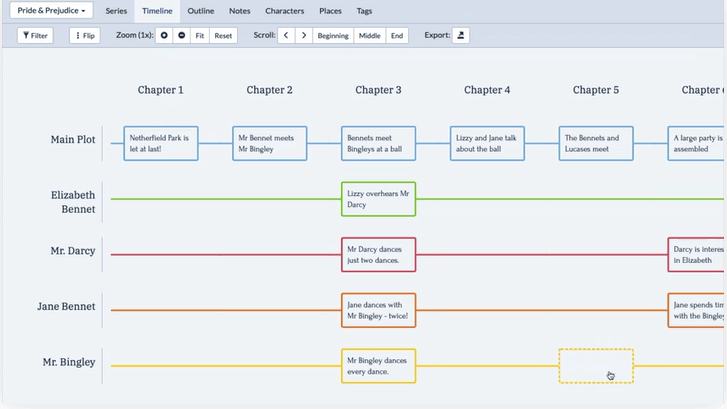
Aeon Timeline
Another timeline option is Aeon Timeline. From the limited time I’ve spent trialling this program, it feels less intuitive than Plottr for novel plotting, but looks like a powerful tool once you get the hang of it. It allows for multiple ways of viewing your data including the timeline, a diagram of how your characters connect and appear throughout the narrative, and mind mapping.
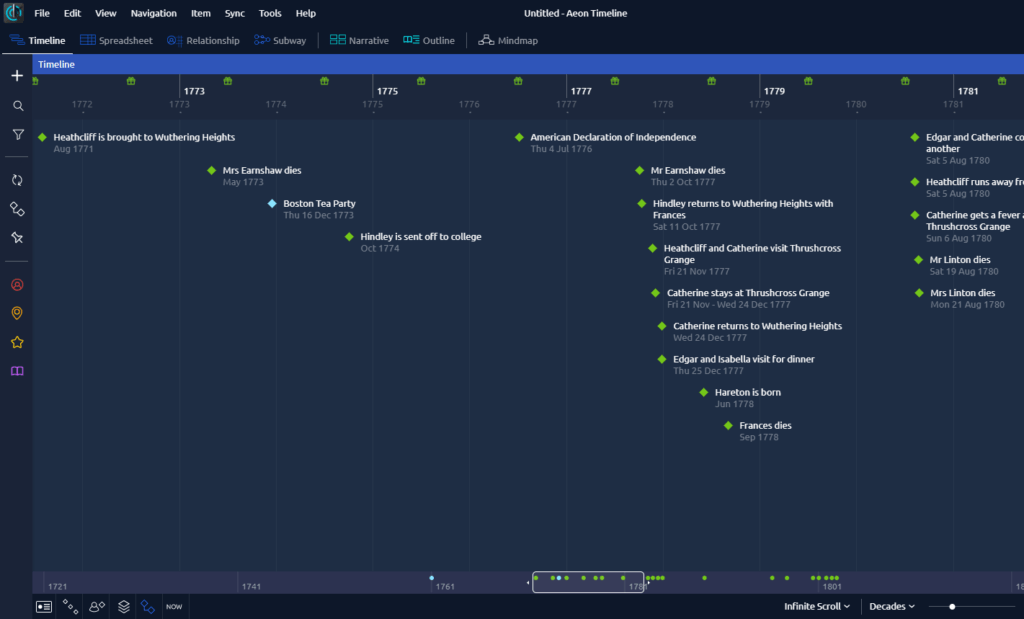
Miro
Miro allows for visual representation of a story including mind maps where you can see how your ideas connect. There is a free version with the option to upgrade to a pro subscription.
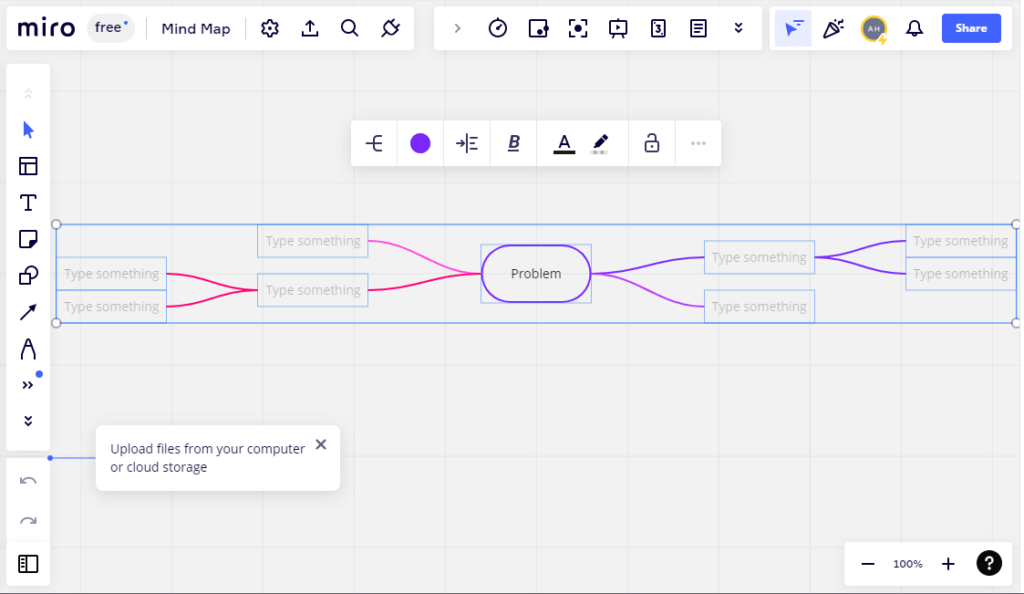
WorldAnvil
If you enjoy intensive worldbuilding, this one might work for you! There’s a free version but many of the features require an upgrade to a subscription. WorldAnvil has many features for writers and can be used for planning as well as drafting your novel.
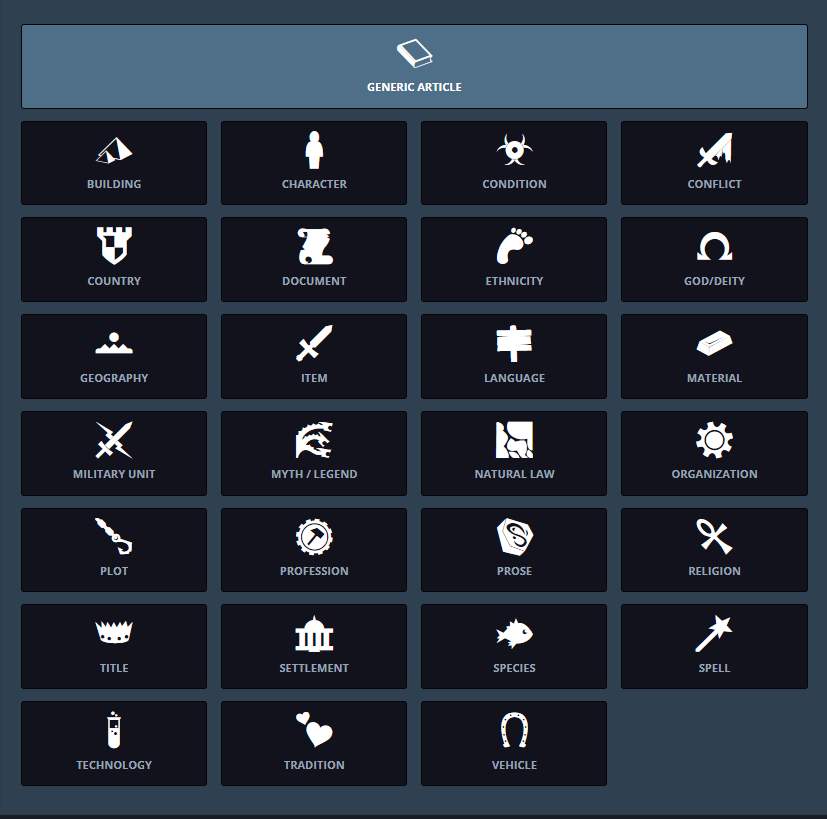
Campfire
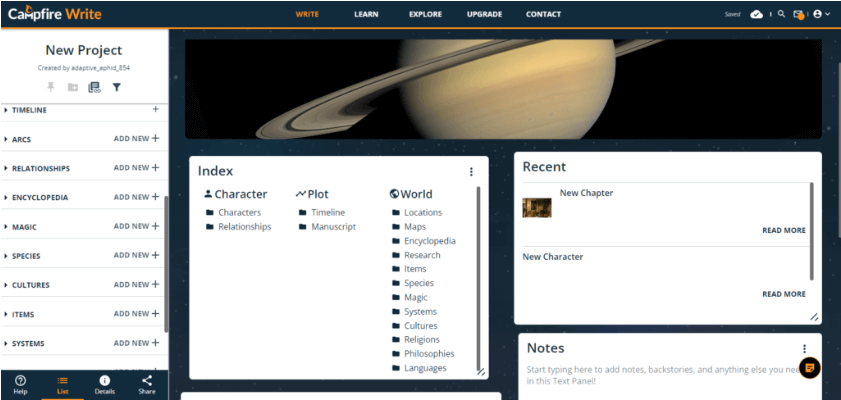
Like WorldAnvil, Campfire can be used for planning as well as drafting. Campfire has designated places for your notes on characters, plot and worldbuilding and a drafting area that allows you to see chosen story elements beside your writing as you type.
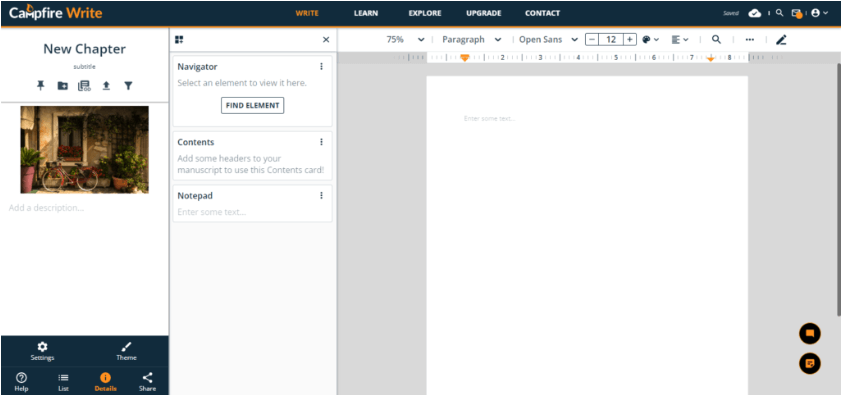
Drafting Software
Microsoft Word
Word is the industry standard. Even if you write in another program, you will likely need to use Word at some point in the publication process. Many editors prefer to use Word and will use the Track Changes feature – so it is worth becoming familiar with this!
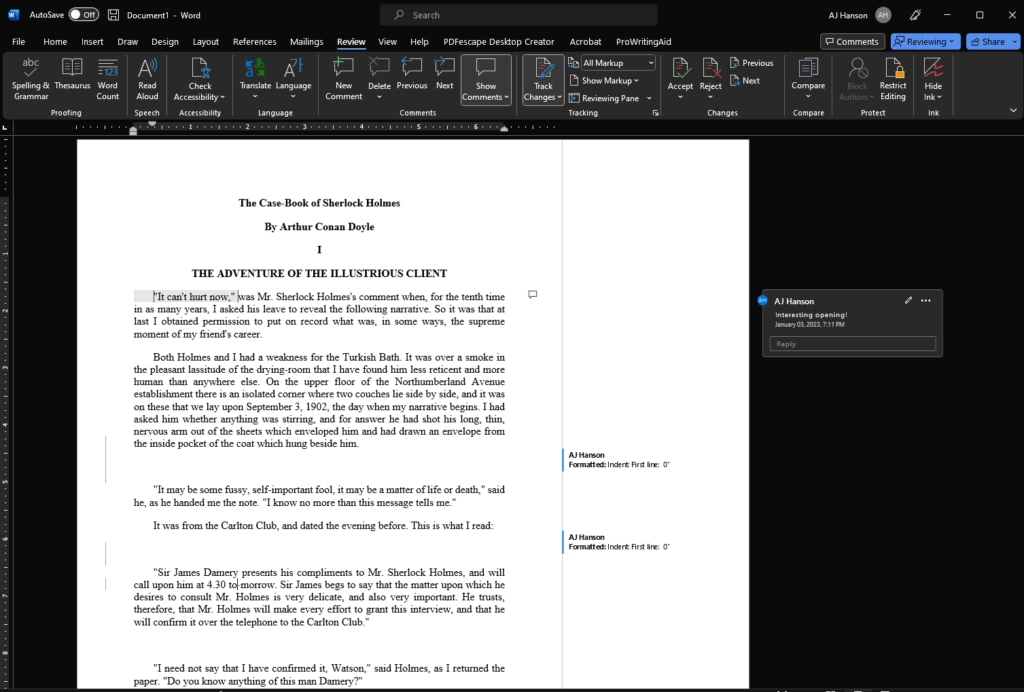
Scrivener
Often touted as the best writing software for novelists, Scrivener has been around since 2007. It is available as a one-time purchase rather than a subscription. Scrivener allows you to section your writing into chapters and scenes then click and drag to reorder. You can set and track goals, and use metadata to track almost anything. The corkboard function serves as an overall view of your story. Scrivener is highly customizable and you can create templates if there is a format you prefer to use.
Drawbacks: There is a steep learning curve. There are entire courses dedicated to learning the ins and outs of Scrivener.
Unfortunately, the biggest issue I have with Scrivener is that is it not cloud-based. This might actually be a positive thing for writers who prefer to write offline, however, for a writer such as myself who writes across devices including a desktop computer, a laptop, and a phone, this isn’t effective software. It is possible to sync files with Dropbox so Scrivener can be used across devices but this requires a Dropbox account. Syncing with other cloud services is possible but comes with many warnings about the potential loss of some of your work.
For mobile apps so far there is only an iOS version of this software, not Android.
That said, if you prefer to write offline, write mainly on one device, or use Dropbox, Scrivener is worth checking out as a tool to draft and organize your manuscript.
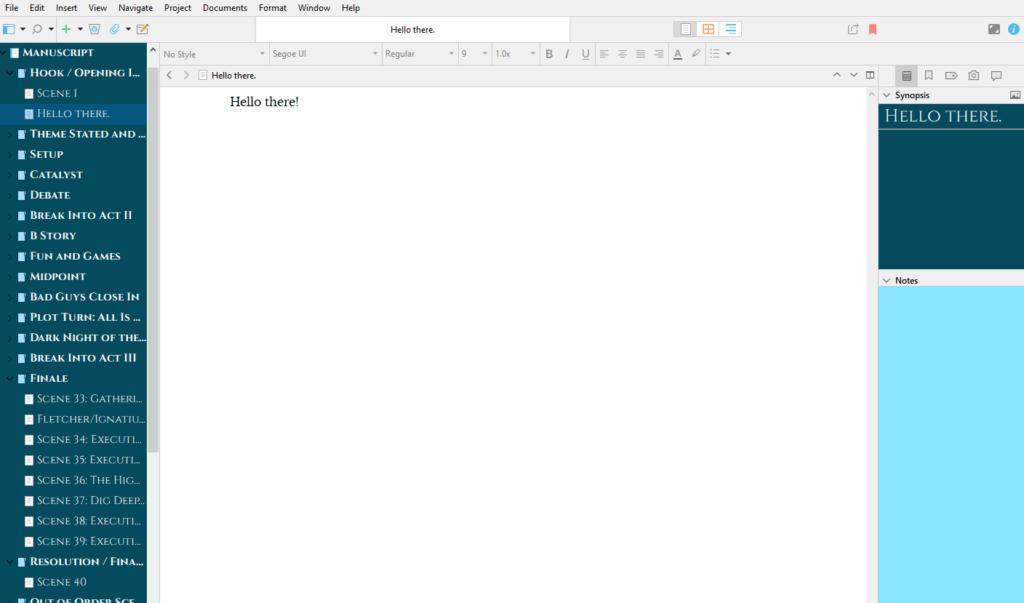
Hermit
Hermit is a Canadian company based out of Montreal.
Hermit is a bare-bones writing program that lets you write on the cloud. It allows you to section your work into scenes or chapters. You can format with different fonts or drop caps at the beginning of sections so that it really feels like you’re writing a book. The app is free to use and has an annual subscription option if you would like dark mode or more formatting options.
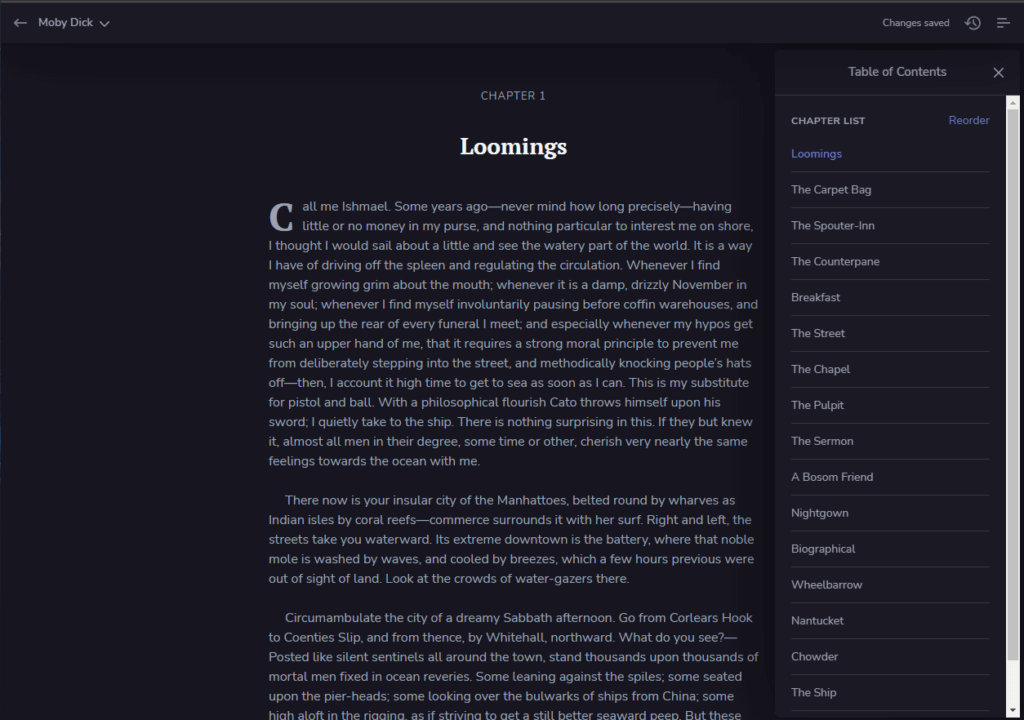
Bonus! If you want to hold your draft in your hands, you can order a printed copy as a paperback book.

Novel Factory
The Novel Factory provides step-by-step information about how to write a novel as you write your draft. It is designed to guide you through from developing your initial concept to completing your first draft. There is goal tracking available and your notes are displayed alongside your writing. This software is cloud based and can export to word.
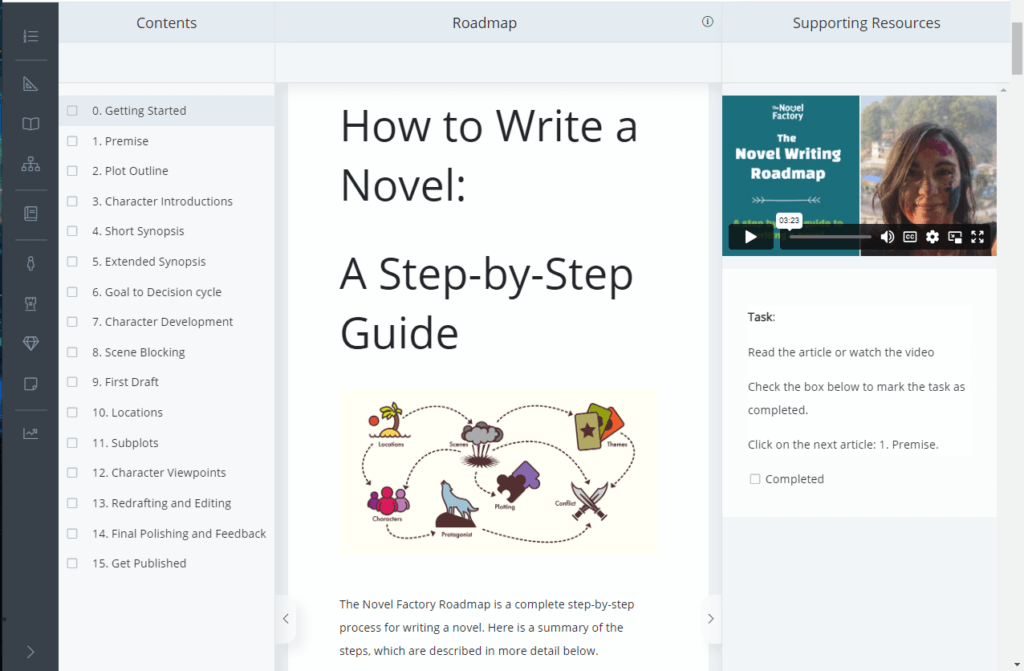
Storyist
Storyist is a planning and drafting software available for macOS and iOS systems. I only have access to Windows and cannot provide an accurate review, but if you use Storyist, please comment in the comments section!
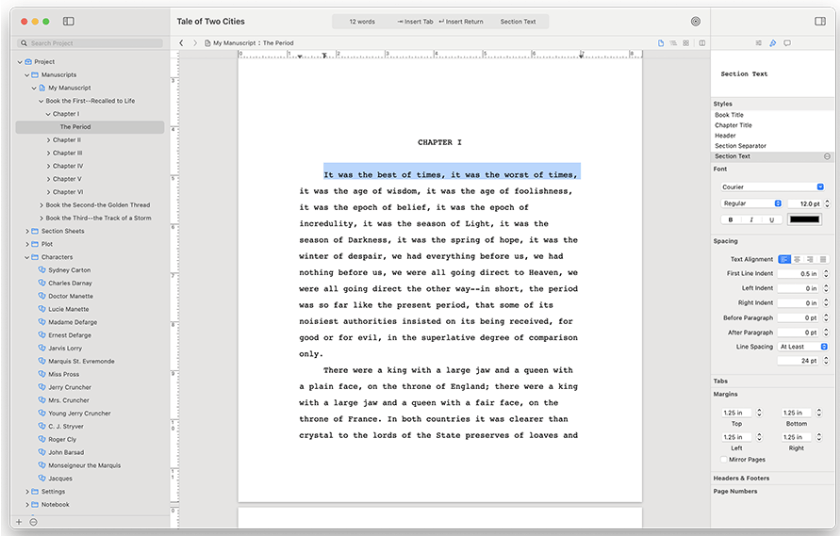
Editing Software
The ProWritingAid and Autocrit links below are affiliate links - which means I may receive a percentage of the revenue generated from purchases through these links.
ProWritingAid
ProWritingAid is a versatile editor that specializes in grammar, writing style, and readability. With information provided alongside its suggestions, ProWritingAid can help you learn to improve your writing craft. This software is available as a subscription or a one-time payment of $399 USD (keep an eye open for sales!). Analysis of 500 words at a time is free.
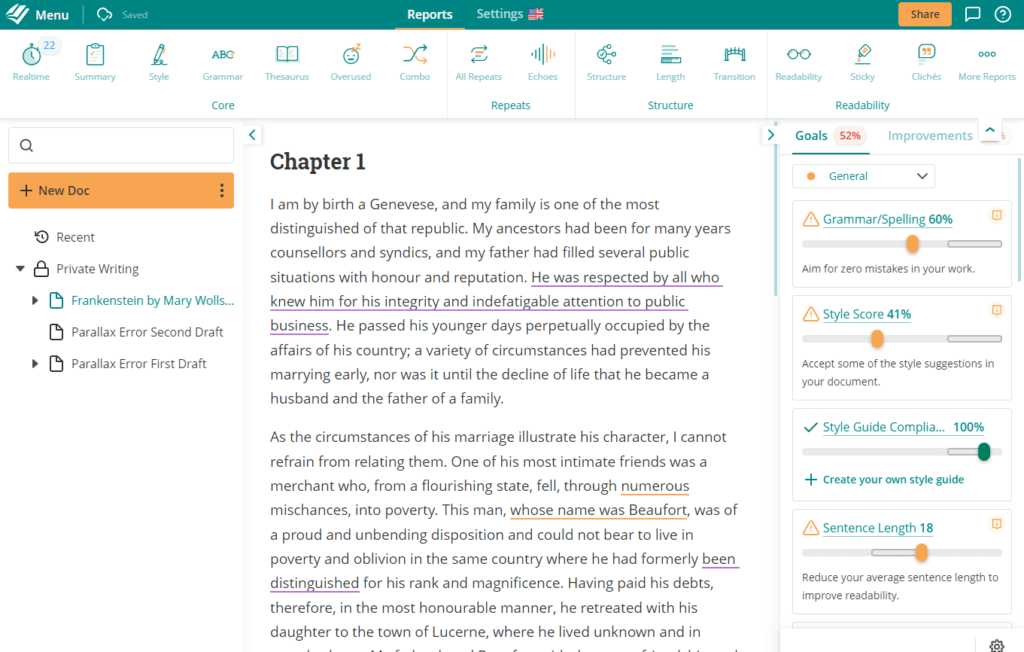
ProWritingAid can integrate with Word/Outlook, Google Docs, Scrivener, Open Office, and Final Draft (a screenwriting software). They also have a browser extension so you can edit on Medium, Wattpad and other websites. For the full reports about your writing including “writing style” (things such as passive voice, adverbs, and repeated sentence starts), “grammar,” “overused words” and a whole lot more, you can upload to their desktop or browser-based platform. ProWritingAid allows you to choose the type of document you are editing so it can be compared against that format.
With all the integrations and the ability to fix issues with a click, ProWritingAid offers a flexible program that excels for use by fiction writers.
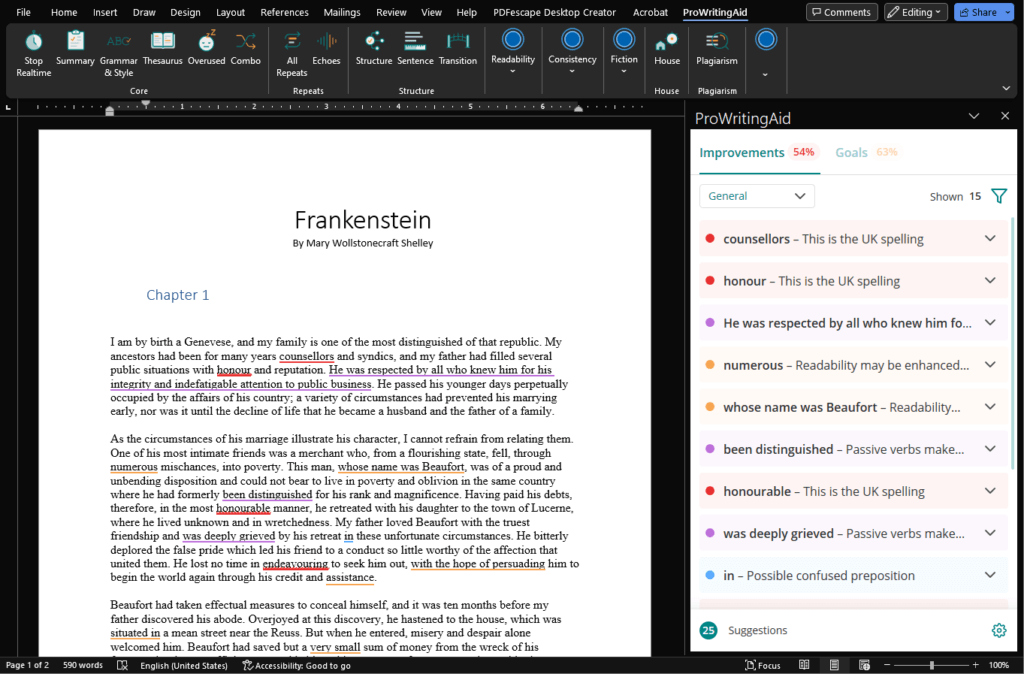
AutoCrit
AutoCrit, while less versatile than ProWritingAid, specifically addresses fiction. It is a powerful tool for analyzing manuscripts because it allows you to compare your work to your choice of genre or author. This ensures that your writing is appropriate for your specific audience. AutoCrit can analyze an entire manuscript and provides a score which improves as you edit your piece.
AutoCrit is available as a subscription but a one-time purchase of lifetime access is occasionally available during sales.
In addition to editing software, AutoCrit has a community of writers and also offers courses for a fee. I can vouch that their Beyond Reality: How to Write Mind Blowing Science Fiction course is excellent!
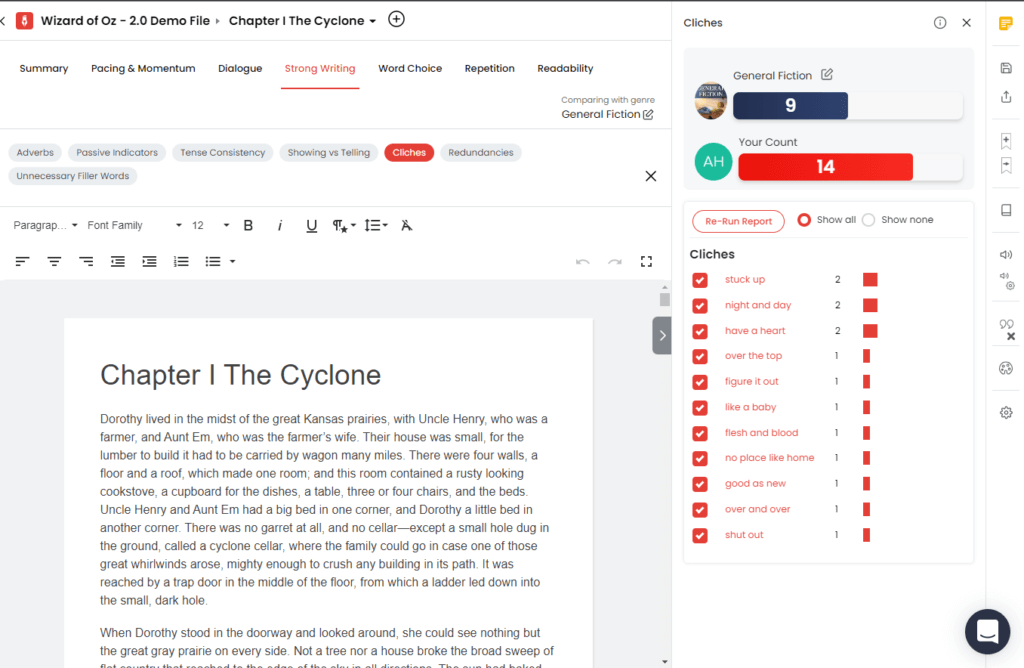
Grammarly
Grammarly is another powerful grammar checker that you can activate across different programs and platforms. The free version checks grammar and spelling but for more advanced suggestions, you need to pay a subscription fee. Grammarly isn’t targeted towards novelists like the previous two editing software, but the free version is handy if you’re in a pinch and the subscription has many helpful suggestions.
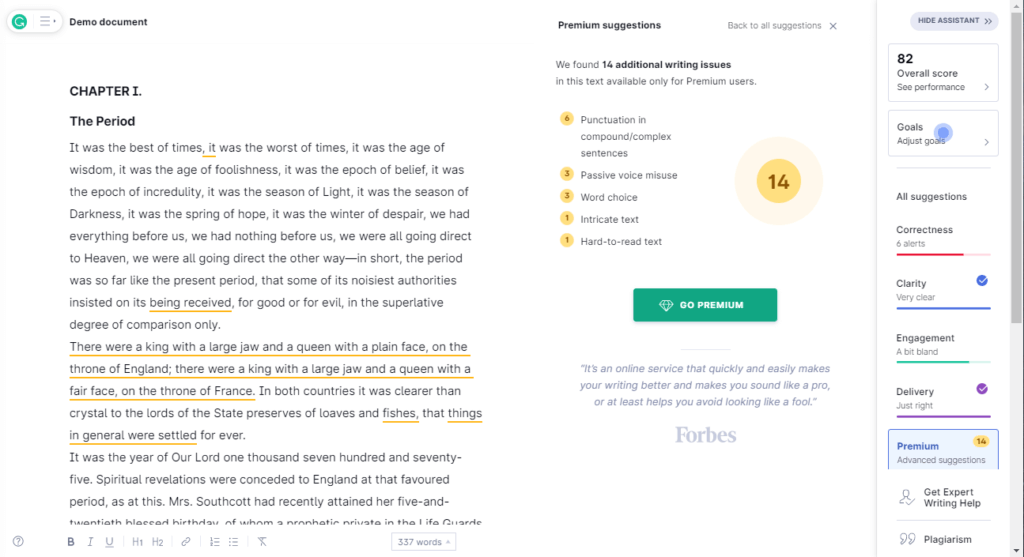
Fictionary

Unlike the editing software mentioned above (which edit at a stylistic and copyediting level), Fictionary focuses on a developmental/structural editing level. Fictionary analyses factors such as plot, setting, and pacing. It allows you to write your manuscript within the software or import an existing manuscript. Using AI, this software analyses your manuscript and provides a dashboard where you can edit scene by scene. Each scene has a dashboard where you can identify the story elements within your scene to see where it is strong and where it is lacking.
This software does an excellent job of making a structural (or story level) edit more manageable.

Best Software for Collaboration
So now we’ve covered software for planning, drafting, and editing. However, some software excels for co-writing and also is useful for sharing work for beta reads. The following are some of the programs I’ve found most helpful for collaborative projects.
Trello
A virtual index card application, Trello allows you to create cards, comment on them, tag collaborators and add collaborators to that board. You can click and drag cards to move them, add lists, tags, and images. Helpful for joint planning and plotting!

Google Docs
A personal favorite of mine. Google Docs works for free with a gmail account and allows you to write on the cloud. An autosave feature means you won’t lose your work.
Using the headings feature can make a large document easy to navigate by using the outline and clicking on the heading of the section you want to work on.
Also, it is easy to share work for beta reads on Google Docs due to “comments” and “suggestions” features. You can add collaborators as editors, commenters, or viewers. Be aware that if you share with multiple people, they can see each other’s comments, though this can be valuable to spark discussion if there are differing opinions.

Best Software for Motivation
We’ve got software for planning, drafting, editing, and collaborating, but are there any out there to help with motivation to actually write? Sometimes we all need a little extra help to kick procrastination and writer’s block.
4thewords
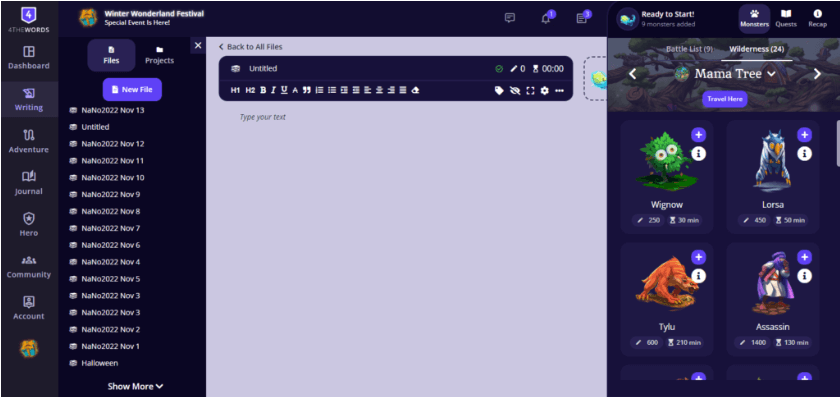
4thewords is an online platform that gamifies writing. Through word counts or endurance battles, you battle various creatures and receive rewards to spruce up your avatar and complete quests. I find this rewards-based system a very effective way of increasing my work counts — It’s easy to push on when you know the next quest is almost complete!
This software is a pay as you go system where you purchase one or more months of access at a time (approx. $4USD per month).
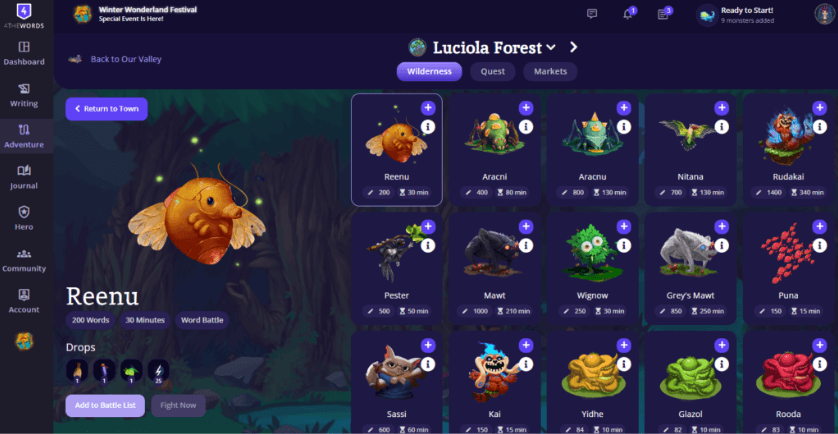
Write or Die
Write or Die is an online writing app where you set your goals and choose your consequences. You can choose positive consequences such as a dinging bell or negative consequences. The default consequence if you stop writing for too long in the free mode is the screen turning red and a horrible screeching noise like a train on the tracks. If you purchase Write or Die, there are more stimuli you can choose.
If you really need some adrenaline to break through writer’s block, turn on kamikaze mode and Write or Die will begin to delete your writing if you pause for too long!
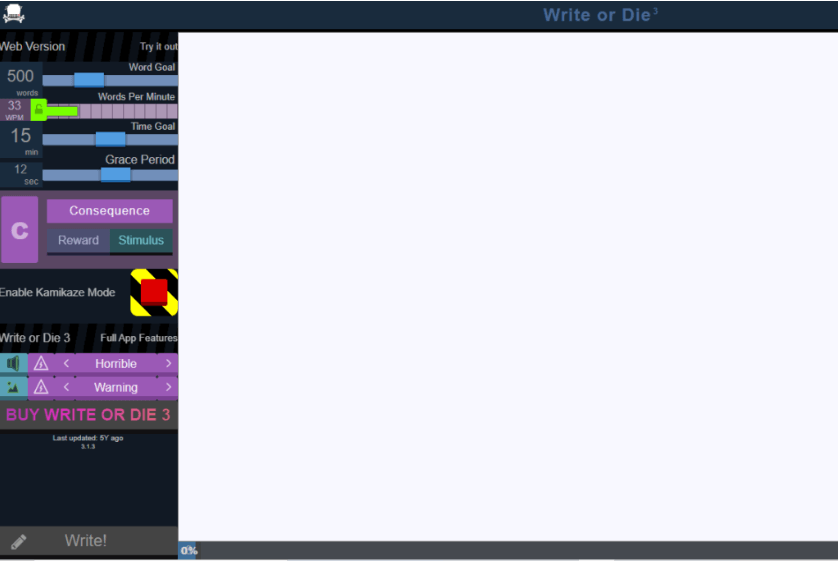
Pomofocus
Ever heard of the Pomodoro Method? Originally developed by Francesco Cirillo in the 1980s, this method claims to help make the most of the time you have by blocking out your work into 25-minute sessions of intense focus, followed by a five-minute break. Pomofocus is a free online timer if you want to give this method a try.

All-in-One Combinations
Given the above software, which combinations will cover planning, drafting, and editing?
Do you prefer computer-based writing or use an iPhone?
Plottr + Scrivener + ProWritingAid
This combo is great if the idea of paying for a subscription makes your skin crawl. If you’d rather make a one-time purchase, you can buy Scrivener and lifetime access to Plottr and ProWritingAid.
If you write on your phone, Scrivener has an iphone app but at the time of writing does not yet have an android app.
Are you an Android user and prefer to write on the go?
Plottr + Google Docs + ProWritingAid
ProWritingAid can even integrate with your Google Docs account and be used to edit on the fly.
Need it to be free?
Try the following for a budget-friendly combo:
Trello + Google Docs + Grammarly
But wait! What if you’re in the woods with no internet? (And somehow your laptop is charged)
Plottr + Word or Scrivener + Prowritingaid desktop app
Want One Software That Does it All?
Overwhelmed by the piecemeal options? Here’s a breakdown of the software that claim to do it all.
| Planning and Plotting Capability | Goal Tracking | Co-Authoring Capability | Editing Capability | Monthly Subscription Pricing | Lifetime Pricing Available? | |
|---|---|---|---|---|---|---|
| NovelPad | Yes. | Yes. | No. | ProWritingAid Integration | $15 USD | No. |
| First Draft Pro | Yes. | Yes. | Yes. | Grammarly compatibility | $18 USD | No. |
| Dabble | Yes. | Yes. | Yes *at Premium tier | ProWritingAid Integration *at Premium tier | $20 USD *Premium tier | Yes. $499 USD |
| Novlr | Yes. | Yes. | No. | ProWritingAid Integration *at Pro Tier | $18 USD *Pro Tier | Yes. $499 USD |
| LivingWriter | Yes. | Yes. | Yes. | Grammarly Integration | $9.99 USD | No. |
| Ulysses *available only for iOS and macOS | Yes. | Yes. | No. | Built in proofreader and editing assistant | $5.99 USD | No. |
NovelPad
NovelPad boasts a minimalist interface with impressive functionality hidden in the sidebar.
Through the chapters and plot sections, you can organize notes about each chapter. There are sections for characters and locations. The most unique feature of NovelPad is their Insights feature that allows you to cross-reference scene attributes.
NovelPad also sports a robust goal tracker.
Editing support is provided through NovelPad by ProWritingAid.

First Draft Pro
First Draft Pro has more of the Scrivener-type appearance with chapters and scenes listed along the left and notes on the right.
For planning, the Outline section allows you to organize and move scenes and chapters.
When drafting, this software allows you to link notes within scenes or between notes for easy navigation. Also, scene prompts from your outline populate into the right sidebar while you’re writing your scene so you can see your outline notes at the same time as writing your manuscript.
In regards to editing, First Draft Pro is lacking a built-in editor and instead is compatible with the Grammarly browser integration.
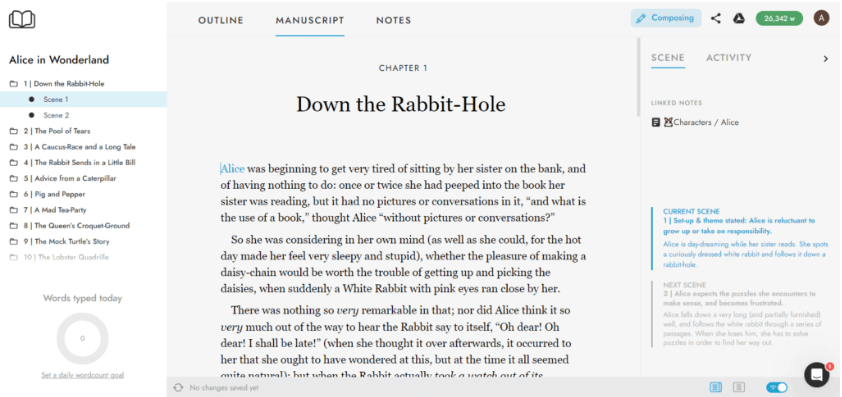
Dabble
I’m partial to Dabble because the interface is similar to Scrivener, which makes sense as it claims to be “Like Scrivener, Minus the Learning Curve.” If you participate in NaNoWriMo, Dabble can automatically send your wordcounts to your NaNoWriMo dashboard in November.
I love a good goal tracker and Dabble absolutely delivers. With the ability to set goals, calculate necessary word counts, and account for days off, Dabble’s goal tracking feature is one of the best I’ve found.
Dabble supports comments, sticky notes, and story notes, and an index card plot grid.
For editing, “advanced grammar and style checks” from ProWritingAid come with the Premium subscription level. This software also supports unlimited versions of your novels which is handy for revisions.
Dabble is available online or offline with their desktop software.

Novlr
The free version of Novlr is quite powerful if you are only writing one novel. The free version includes access to their writing platform, analytics, goals and streaks as well as the import and export function. Upgrading to Pro allows you to write unlimited novels in this program and use the built in proofreader. (The proofreader/editing assistant is only available with a subscription or lifetime purchase).
The interface is simple but provides areas to separate out your scenes and chapters as well as your notes.
Similarly to Dabble, Novlr integrates with NaNoWriMo and can send your daily word counts to the NaNoWriMo dashboard during this event.
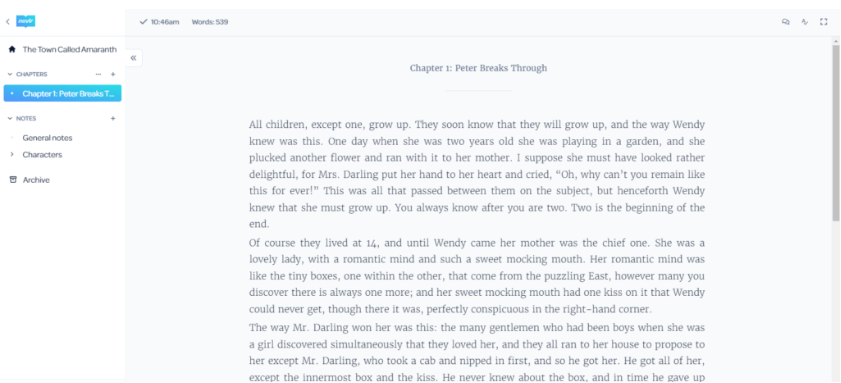
LivingWriter
LivingWriter is the most affordable subscription on this list (with the exception of Ulysses if you have a Mac) and is PACKED with useful features for novelists.
For plotting assistance, Livingwriter is equipped with an array of plot templates for commonly used plot structures and has notes in the template about how to effectively use each one. Livingwriter also has handy features like a plot board, and global story view for planning your novel. The Freeform Grid plot board allows you to connect plot points and create a mind map.
Similarly to Scrivener, it has the ability to separate your work into chapters and sub-sections. There is a section for story elements where you can add items, characters or places and link that information while you are writing. For example, if you had a story element of a character called Portia, every time you typed Portia in your manuscript, you have the option of linking it to the story element. Once it is linked in your manuscript, you simply click her name in your manuscript, and the side bar pulls up all the information about Portia.
Editing features are lacking in LivingWriter as the grammar and spellchecking is powered by the Grammarly add on in your web browser (essentially, the free version of Grammarly). Notably, if you had access to ProWritingAid, this would also be able to be used with LivingWriter if you installed the web browser integration.
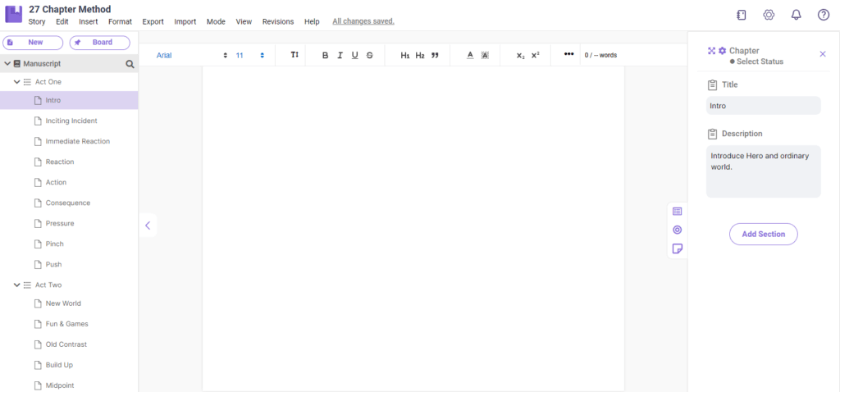
Ulysses
Without access to a Mac, I’m unable to try this one out, but their website states that Ulysses provides a distraction-free writing environment. There is also a space for notes, images, and background information as well as the ability to organize your writing into chapters and scenes. The built in proofreader and editing assistant checks for more than just spelling and grammar and includes checks for factors such as style and redundancy.
In Summary
There are many options for writing software out there and ultimately, only you can figure out which ones will work best for your process and writing style. Hopefully this breakdown can assist you in making that choice!
Did I miss any of your favorite software? Anything new that you’d like to try out? Please comment below if you have any recommendations that didn’t make this list!
If you enjoyed this post, please subscribe to my monthly newsletter for notice of new blog posts and book news.



